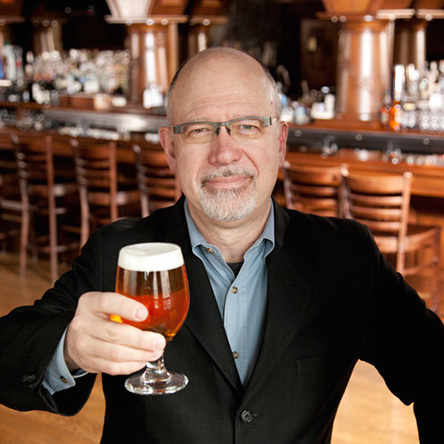
Aussie beer in good shape: Cicerone
The Australian beer scene looks to be heading in a positive direction, Cicerone founder Ray Daniels has declared, as he prepares to stage the certification program’s first ever exam on Australian soil.
The Certified Cicerone exam will be held in the first quarter of next year, Daniels told Australian Brews News, commenting that he had been impressed with the standard of beer service he had encountered on his recent visit.
“But I live in a rarefied world where I really only go to the top beer bars, the places that have great beer programs,” he acknowledged.
“Certainly The Local Taphouse guys are doing a very nice job. I went to the Gertrude Hotel in Melbourne and was extremely impressed with the server that was behind the taps,” he said.
“I came in, it was a quiet evening and I just said – ‘I don’t know anything about these beers’. She literally walked me through every one and had some good references to classic styles and such. As far as I know they had no idea who I was.”
Common pitfalls of beer service Daniels said inadequate vocabulary of beer flavour and style descriptors is the most common shortcoming he sees in bars the world over.
“They’ll say things like ‘it’s light, really easy drinking, you’ll really like it’ – none of those things are particularly useful in helping you understand what the beer’s going to taste like,” he said.
Ensuring glasses are “not just clean but beer clean” is another area where venues often fall short, added Daniels.
“Nothing really reveals a dirty glass faster than beer, because the bubbles in the beer will stick to any sort of debris that’s left behind in the glass. The head or foam on the beer dies rather quickly if the glass has not been properly cleaned,” he said.
Daniels said these aesthetics can make all the difference for bars that want to entice people to drink beer in their venue.
“The places that aren’t doing it well, it’s just like ‘ergh’… maybe it’s time for a gin and tonic,” he said.
In Australia specifically, he said frozen glassware is still commonplace, which is never good for beer.
“Super cold beer hides flavours and ice crystals in beer glasses makes beer foam, so it makes it very difficult to pour and leads to a lot of beer waste, which is not a good thing for the establishment,” he said.
“It’s really falling away in the States. It’s something that used to be quite popular when cold was the only key point of distinction you could make when all the beers pretty much tasted the same.
“The beer’s being poured at a super cold temperature already, typically colder than most brewers would like to have their beers served at. Pouring it into a room temperature glass helps warm it up just a tad.”
Constructive criticism for Australian breweries Daniels said he had visited several breweries in Sydney and had plenty of good beers.
“Obviously some of the craft guys are fairly new at the game and there’s a few things they’re still working on. By and large things are looking good and headed in a very positive direction,” he said.
Pushed to name any shortcomings, he said some of the beers were “not as refined as they could be, they’ve still got a few rough edges on them”.
“Sometimes good fresh hops are not necessarily available of the American varieties, outside the States. So every now and then I’ll get a beer where I can smell the age of the hops, I can tell that they’re not super fresh,” he said.
He said he’d also seen some acetaldehyde – “a little bit of a green apple flavour” and diacetyl – “that buttery or butterscotch note” – faults, both indicators of beer that hasn’t been properly matured.
“There are some styles where the English brewers in particular tolerate a bit of diacetyl in their finished beers – that’s considered to be acceptable. But for American styles, not so much,” he said.
“Those are things that the breweries will get better and better at over the years.”
His only other criticism was around packaging. “I had a pair of beers from a brewery and the draft product was just fantastic, I really enjoyed it a lot,” he said.
“So I ordered one of their bottle products and it was in a green bottle and it was cork finished and it was terribly oxidised and terribly lightstruck. I know the brewery’s creating great beers but definitely that’s not a great choice of packaging.”
How to get certified The Cicerone program certifies and educates beer professionals on five key areas: Keeping and Serving Beer; Beer Styles; Beer Tasting and Flavours; Brewing Ingredients and Processes; and Beer and Food Pairing.
There are four levels of certification: Certified Beer Server, Certified Cicerone, Advanced Cicerone and Master Cicerone.
Certified Beer Server is attained by online multiple choice exam. The higher levels of certification require a written exam plus a tasting and demonstration component, and only they enable people to claim the title of Cicerone.
Daniels is now working to appoint an Australian agent to manage the program in this market and assist in developing a local syllabus.
“I am going to come back in the first quarter of next year to run a Certified Cicerone exam or perhaps two, one in Melbourne and one in Sydney,” he said.
For further information visitCicerone.org.




